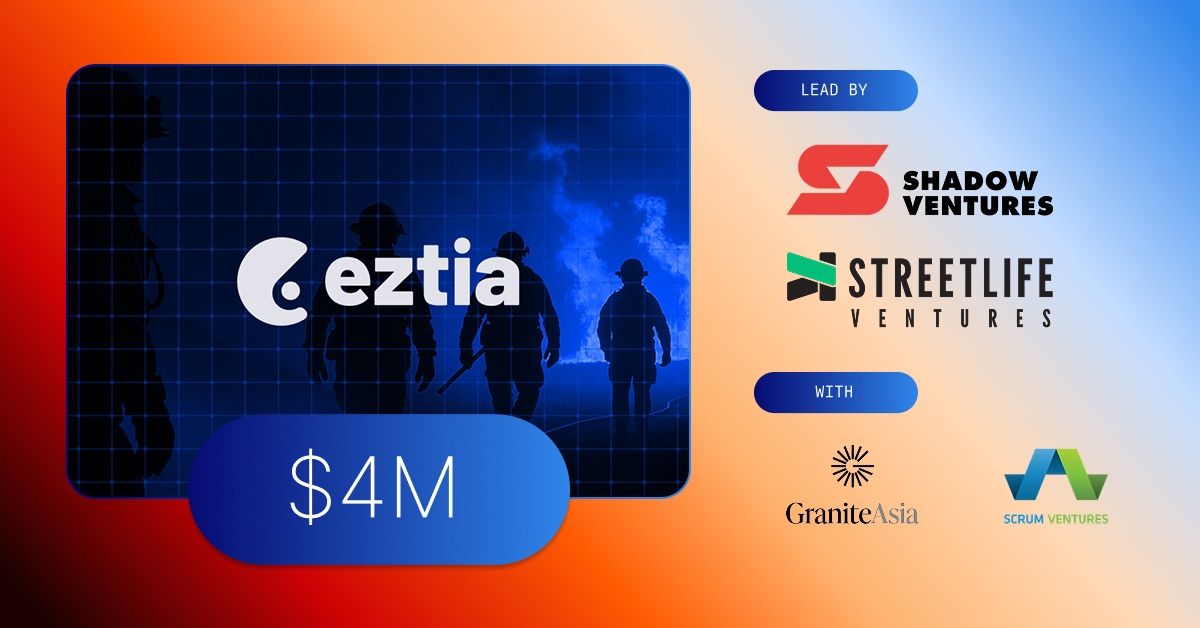
Earlier this year, Shadow invested in Eztia.
Here is our thesis:
1/ Field problem, not a dashboard problem
Heat is not abstract. It is a worker losing an hour off a shift at 3 p.m., a safety officer calling yet another cooldown, a unit leader deciding whether to scrub training. Every job site already buys water, shade, and signage. Very few have a workable way to take heat off the body while work is happening. That is the gap Eztia fills.
2/ Materials breakthrough
Eztia’s product, HydraVolt, is a materials invention, not a gadget. It’s a tuned hydrogel that sits close to the skin, moves heat by evaporation, and stays dry to the touch. In both the lab and the field it delivers ~10°C skin temperature cooling for up to 8 hours, then recharges in water in minutes. No batteries. No pumps. No freezers. The team also developed a printed “dot” architecture that keeps working in high humidity by increasing surface area and airflow. The result feels obvious in hindsight: thermal design for humans that live inside the gear people already wear.
3/ Logistics is the wedge
Most competing ideas add logistics you do not have: charge cycles, ice, bulk, or special storage. HydraVolt removes logistics you do not want. A cooling shirt that recharges from a 5-gallon bucket is the difference between a pilot that looks good on a slide and a program that survives August. Simple logistics is why this can scale across construction, utilities, ports, and defense.
4/ A 3 day packback period
Above 90°F, crews routinely lose 50% of output. A HydraVolt kit that gives back even 2 hours of productive work on a hot day pays itself back in less than 2 days. After that, the rest of the season is margin. Incident avoidance and fewer heat-related stoppages are upside we’re not even counting. It’s a no brainer purchase.
5/ Right side of the competitive map
HydraVolt does the boring, hard thing: remove heat at useful flux for a full shift and do it inside existing uniforms. That puts Eztia in the only quadrant that matters on a job site: effective and deployable.
6/ Focused GTM
Win B2B in construction and defense/public safety for the next 18–24 months. It is the right sequencing: prove outcomes where heat is mission-critical, then scale through partners where distribution wins over time.
7/ Team that ships
Tiffany Yeh, MD (MIT materials, physician) and Jack Wilson (US Army special operations, ops at Vannevar) are a rare pairing: deep science plus field judgment. What we saw in diligence was speed and coachability. In a few quarters, they went from adhesive slabs to garment inserts to a humidity-resilient dot pattern, while lining up the right pilots. A construction executive’s line stuck with us: “This one actually works.”
8/ What would have to be true
9/ The bet
In a hotter world, the default kit becomes Water. Rest. Shade. Cooling. Eztia is our bet that the fourth step becomes standard. A simple, power-free layer that keeps crews, responders, and athletes on task throughout a FULL DAY is both obvious and overdue.
10/ Why us
We invested to help Eztia convert pilots to programs, stand up pilot-scale manufacturing, and structure the first licensing deals. Our job is introductions to the right safety leaders and public-sector buyers, pressure-testing the B2B motion, and keeping the roadmap focused.
We’re excited to help the team build the default cooling layer for work in the heat.